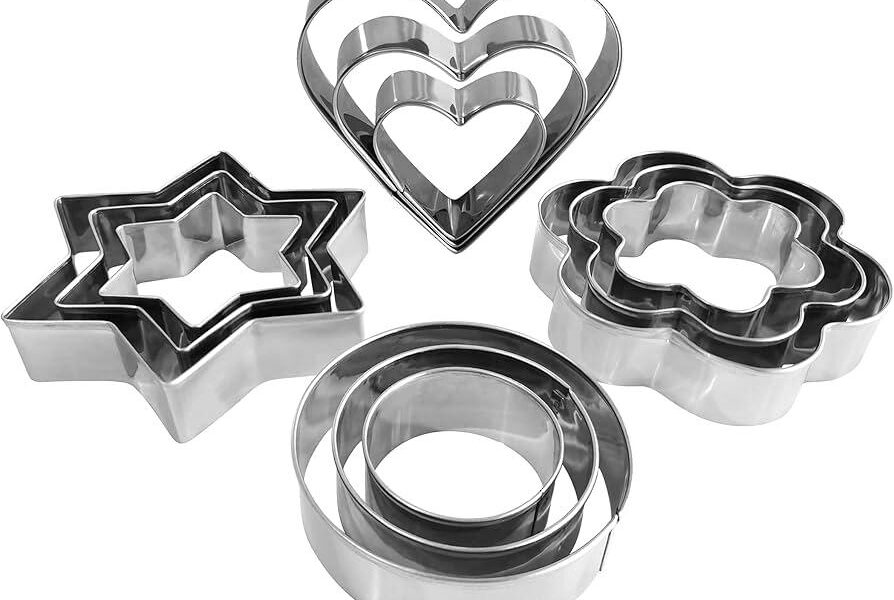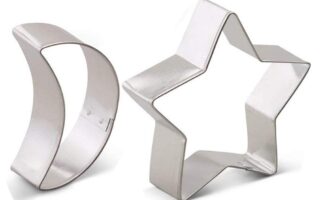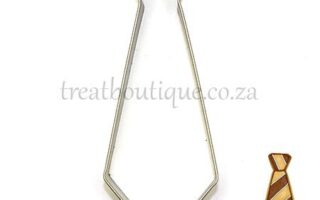The Art of Cookie Cutter Cookies: A Delightful Exploration
In the realm of baking, few creations are as universally cherished as cookies. Among the myriad of recipes and variations, one stands out for its whimsical charm and nostalgic appeal: cookie cutter cookies. These delectable treats transform ordinary dough into a canvas for creativity, inviting bakers of all ages to mold and shape their culinary dreams. Whether adorned with colorful icing, festive sprinkles, or left delightfully simple, cookie cutter cookies evoke memories of childhood kitchens filled with laughter and the sweet aroma of baked goods. In this article, we will delve into the history, techniques, and endless possibilities of cookie cutter cookies, celebrating not just their flavor but the joy they bring to gatherings, holidays, and everyday moments. Join us as we uncover the magic of this beloved baking tradition.
Table of Contents
- The Art of Shaping: Exploring the History and Techniques of Cookie Cutters
- Perfecting the Dough: Tips for Achieving the Ideal Texture and Flavor
- Creative Decorating: Innovative Ideas to Transform Your Cookie Cutters
- Beyond the Basics: Unique Uses for Cookie Cutters in Culinary Creations
- Q&A
- To Conclude
The Art of Shaping: Exploring the History and Techniques of Cookie Cutters
The journey of cookie cutters begins long before the first batch of dough met its metal edge. Emerging in the 19th century, these charming tools were originally fashioned out of tin or copper and shaped by artisans skilled in metalwork. As baking became more accessible with the advent of the industrial revolution, cookie cutters tossed tradition aside for more innovative designs, reflecting the evolving tastes and cultures of society. Today, we see cookie cutters in an array of shapes—from holiday-specific motifs to whimsical designs that spark joy in bakers and eaters alike. This transformation not only highlights the functionality of these tools but also their role as a canvas for creativity, allowing enthusiasts to infuse personal touches into each baked good.
The techniques behind using cookie cutters have also developed dramatically, celebrating the simple yet satisfying craft of shaping dough. While traditional methods involve rolling out the dough, chilling it for ease of cutting, and gently lifting the shapes onto a baking sheet, modern bakers have introduced various approaches to elevate their cookie-making experience. Some popular techniques include:
- Layering flavors: Combining different cookie doughs for an eye-catching and tasty treat.
- Using fondant: Adding decorative elements around the shaped cookies for a professional look.
- Imprint methods: Incorporating textures or patterns into the dough before cutting shapes.
As cookie-cutter techniques continue to evolve, bakers are encouraged to experiment and let their imaginations run wild. Mixing old-world charm with modern creativity, the art of cookie cutters lives on, ensuring that each batch of cookies tells a delicious story.
Perfecting the Dough: Tips for Achieving the Ideal Texture and Flavor
Achieving the perfect dough for cookie cutter cookies hinges on a few key factors that enhance both texture and flavor. To start, ensure that your ingredients are measured accurately; this sets a solid foundation for great results. Use room temperature butter to create a creamy texture, and blend well with your sugars to incorporate air. This is crucial because it affects the final spread and shape of your cookies. When mixing in your flour, consider using a sturdy flour like all-purpose, but take care not to overmix—this can lead to tough cookies. Here are some tips to remember:
- Chill the dough: Resting the dough in the fridge for at least 30 minutes makes it easier to roll and helps prevent spreading during baking.
- Use parchment paper: This prevents sticking and promotes even baking.
- Don’t skip the salt: A pinch of salt enhances sweetness and balances flavor.
Another essential step is considering the flavor profile by incorporating extracts or spices. A splash of vanilla or a hint of almond extract can elevate the taste of your cookies significantly. For an optimal balance, include mix-ins such as chocolate chips, nuts, or dried fruits, but remember to keep these in moderation to maintain the integrity of your cookie shapes. Below is a simple outline for flavor-enhancing additions:
| Addition | Effect |
|---|---|
| Vanilla Extract | Enhances sweetness and adds warmth. |
| Cocoa Powder | Adds depth and a chocolatey flavor. |
| Cinnamon | Brings warmth and a hint of spice. |
Creative Decorating: Innovative Ideas to Transform Your Cookie Cutters
Transforming your cookie cutters into stunning culinary art goes beyond mere baking; it’s an opportunity to express your creativity. One way to enhance the visual appeal of your cookie creations is by coloring and layering dough. Using different colored doughs, you can create beautiful marbled effects or even layer contrasting textures. For instance, try swirling vibrant pastel shades together or alternating layers of chocolate and vanilla for delightful surprises. Another innovative technique involves impressing designs onto the cookie dough before cutting out shapes. Using textured rolling pins or edible stamps, you can embed intricate patterns or even seasonal motifs, such as snowflakes or leaves, for added flair.
In addition to these techniques, you can elevate your cookie presentation using DIY tools and everyday items. For example, consider crafting your own stencils from cardstock to sprinkle powdered sugar or cocoa on top of your cookies, creating an impressive visual effect on plain dough. Another fun idea is to use edible glitter or gold luster dust for a touch of sparkle, making your treats stand out at any gathering. Here are some more creative suggestions:
- Personalized Embellishments: Use edible markers to draw personalized designs or messages on your cookies.
- 3D Cookie Assemblies: Construct layered cookie structures for themed parties or special occasions.
- Cookie Bouquets: Arrange cookies on sticks to create stunning edible bouquets.
Use a simple materials table to provide specific ideas for decoration and tools:
| Material | Purpose |
|---|---|
| Food Coloring | Create vibrant dough colors |
| Edible Glitter | Add sparkle to finished cookies |
| Stencils | Impress designs or patterns on cookies |
| Edible Markers | Draw personalized messages or designs |
Beyond the Basics: Unique Uses for Cookie Cutters in Culinary Creations
Cookie cutters aren’t just for shaping sweet treats; they can be utilized in ways that elevate your culinary repertoire. For instance, consider using these versatile tools to create stunning savory dishes. Use holiday-themed cookie cutters for shaping vegetable patties or even savory scones, giving your appetizers a festive touch. You can also cut out unique shapes from tortillas, then fill them with a mix of beans, cheese, and spices to create fun finger foods perfect for parties.
Additionally, cookie cutters can emerge as your best ally in the world of baking beyond cookies. They are ideal for crafting artistic pizza shapes or for creating a delightful fruit medley. Simply slice fruits like melons or apples with playful cutters, and arrange them on a platter for a colorful display. Another creative approach is to use cookie cutters as molds for puffed pastry or gelatin desserts, allowing you to serve visually captivating delights that surprise and enchant your guests.
Q&A
Q&A: All About Cookie Cutter Cookies
Q: What are cookie cutter cookies?
A: Cookie cutter cookies are delightful treats shaped by metal or plastic cutters that carve them into fun patterns and designs. These colorful confections often boast festive motifs, making them a popular choice for holidays and special occasions.
Q: How did cookie cutter cookies originate?
A: The art of cookie cutter cookies dates back centuries, with origins rooted in Europe. Bakers used simple shapes for practicality, but over time, cookie cutters evolved into intricate tools, transforming ordinary dough into whimsical works of art that delight both the eye and the palate.
Q: What types of dough are best for cookie cutter cookies?
A: The most common doughs for cookie cutter cookies are sugar cookies and gingerbread. Sugar cookie dough is versatile and easy to work with, while gingerbread offers a spicy kick, perfect for winter celebrations. Both types hold their shape well during baking, resulting in perfectly formed cookies.
Q: Can I use any cookie cutter shape?
A: Absolutely! The possibilities are endless when it comes to cookie cutter shapes. From classic stars and hearts to quirky animals and seasonal icons, you can express your creativity with a wide array of designs. Just make sure the dough is thick enough to hold the shape during baking.
Q: How do I ensure my cookie cutter cookies turn out perfectly?
A: To achieve the best results, chill your dough before cutting it into shapes. This prevents spreading during baking. Also, use a light dusting of flour on the work surface and cookie cutters to ensure clean cuts. bake at the right temperature to achieve that golden-brown perfection.
Q: What is an essential tip for decorating cookie cutter cookies?
A: Decorating cookie cutter cookies is an art! Royal icing and fondant are popular choices for detailed designs, while sprinkles and edible glitter can add a playful touch. Start with a base layer of icing, let it dry, and then add your decorations for a stunning presentation.
Q: Are cookie cutter cookies suitable for all dietary needs?
A: Yes! Many recipes exist for various dietary preferences, including gluten-free, vegan, and nut-free options. Experiment with alternative flours, binders, and sweeteners to create delightful treats that everyone can enjoy.
Q: What are some popular occasions for making cookie cutter cookies?
A: Cookie cutter cookies are especially popular for holidays like Christmas, Halloween, and Valentine’s Day, where thematic shapes align with the spirit of the season. They’re also perfect for birthday parties, baby showers, and family gatherings, allowing for creativity and a shared baking experience.
Q: Can I freeze cookie cutter cookies?
A: Yes! Both unbaked and baked cookie cutter cookies freeze well. To freeze unbaked cookies, shape and cut them, then place them on a baking sheet to freeze before transferring to a freezer bag. Baked cookies can be layered with parchment paper in airtight containers. Just be sure to thaw them properly before serving!
Q: What’s the most fun aspect of making cookie cutter cookies?
A: The most enjoyable part of making cookie cutter cookies is the opportunity to unleash your imagination! From selecting shapes and dough flavors to decorating and sharing creations, the process fosters creativity and brings together friends and family in a delightful baking adventure.
To Conclude
As we wrap up our exploration of cookie cutter cookies, it’s clear that these delightful treats transcend mere ingredients and baking techniques. They are a canvas for creativity, a celebration of tradition, and an invitation to gather around the table. Whether you’re crafting whimsical shapes for a festive occasion or simply indulging in the nostalgia of family recipes, cookie cutter cookies offer a unique blend of simplicity and joy. So, as you roll out your dough and press those beloved shapes, remember that each cookie carries with it the warmth of shared moments and the magic of imagination. Here’s to many delicious batches ahead, where every cookie is not just a treat, but a cherished memory waiting to be made. Happy baking!



